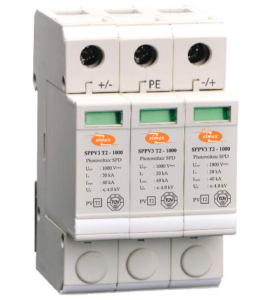Understanding the necessity for surge protection often leads to a critical query: "How much surge protection do I need?" This question delves into the realm of safeguarding electronic appliances from unexpected power surges, which can cause irreversible damage. Determining the appropriate level of protection is not a one-size-fits-all scenario but involves examining several facets of your unique electrical setup.
The cornerstone of surge protection is the surge protective device (SPD). This pivotal apparatus is designed to absorb and redirect excess voltage, shielding interconnected devices from damage during electrical surges. The extent of protection required hinges on various factors, each of which contributes to a tailored approach that addresses individual needs.
Assessing the value of your electronic equipment is an essential step. High-end appliances and sensitive electronic systems demand more robust protection due to their replacement cost and vulnerability to voltage fluctuations. Incorporating a surge protective device is crucial in these instances to avert potential losses, especially in scenarios where a replacement or repair of sophisticated equipment would incur considerable expense and inconvenience.

The frequency and intensity of electrical surges in your locale are another considerable element. Certain areas are more prone to heavy electrical storms or have unstable power supplies, leading to more frequent voltage spikes. In such regions, comprehensive surge protection is a necessity rather than an option. This means not only using a standard surge protective device but also considering additional layers of protection, such as installing SPDs at multiple points, including the electrical panel, outlets, and high-value appliances.
Moreover, the type and features of the surge protective device significantly influence the degree of safeguarding provided. Devices come with various ratings, and understanding these is imperative. Joule rating, for instance, indicates the energy absorption capacity of an SPD - the higher, the better. Clamping voltage is the measurement at which the SPD will conduct the excess voltage away from the line. Lower clamping voltage implies quicker response in diverting the surge. Examining these specifications ensures you select a surge protector that aligns with your safety requirements.
Adding to this, one must contemplate the insurance or warranty aspects that come with your devices and surge protectors. Some surge protective devices include warranties for connected equipment, adding an extra layer of security and peace of mind in your protective measures. It's advisable to choose products that offer this advantage and to understand the terms thoroughly.
In determining how much surge protection is needed, the answer is intricately linked to the individual’s circumstances. Evaluating the specific risks, understanding the locale’s electrical propensity, knowing the value of the electronic equipment, and deciphering the technical specifications of the surge protective device in question are all part of making an informed decision. A proactive approach, from selection to installation and maintenance, paves the way for optimal electrical safety in any environment.